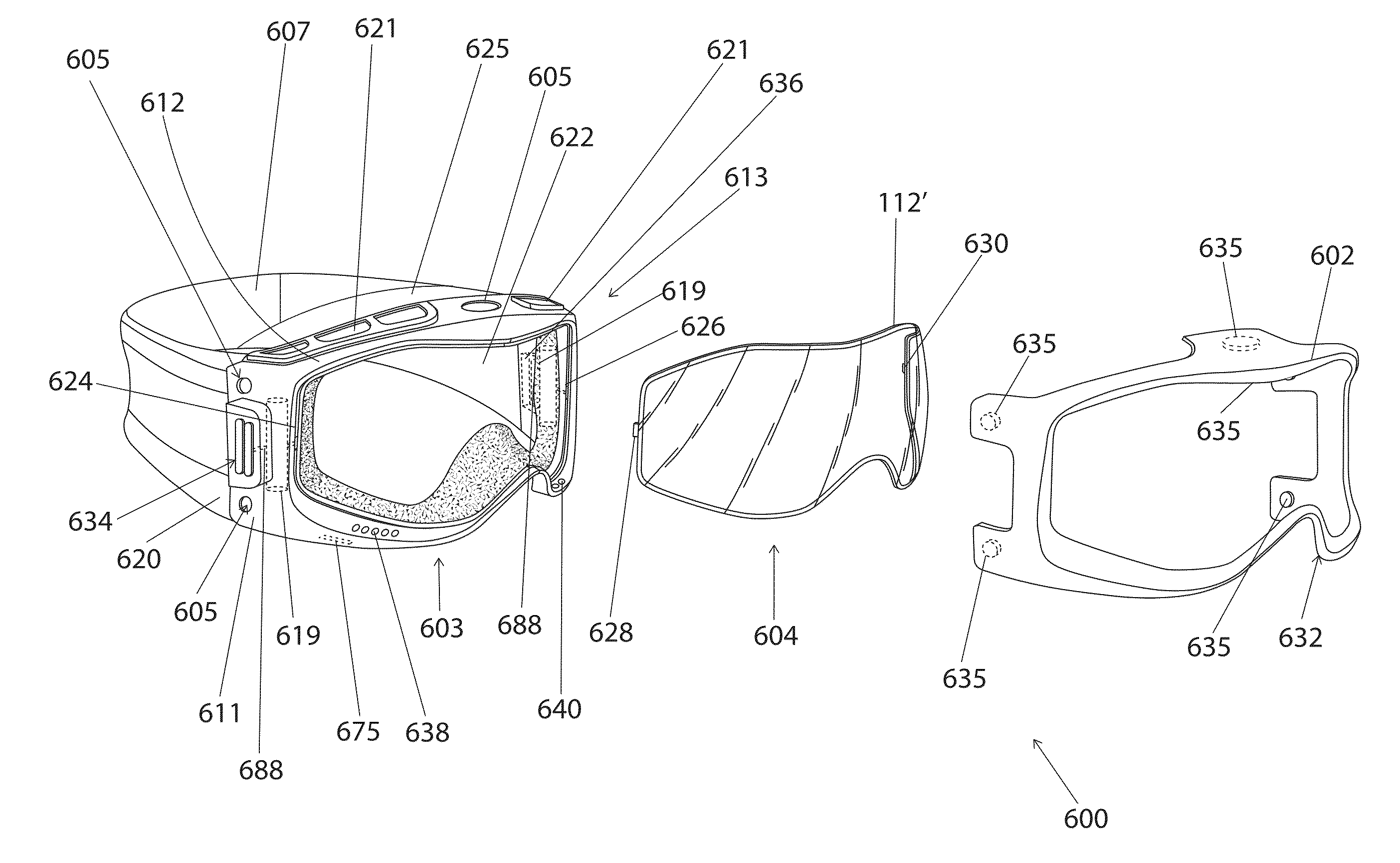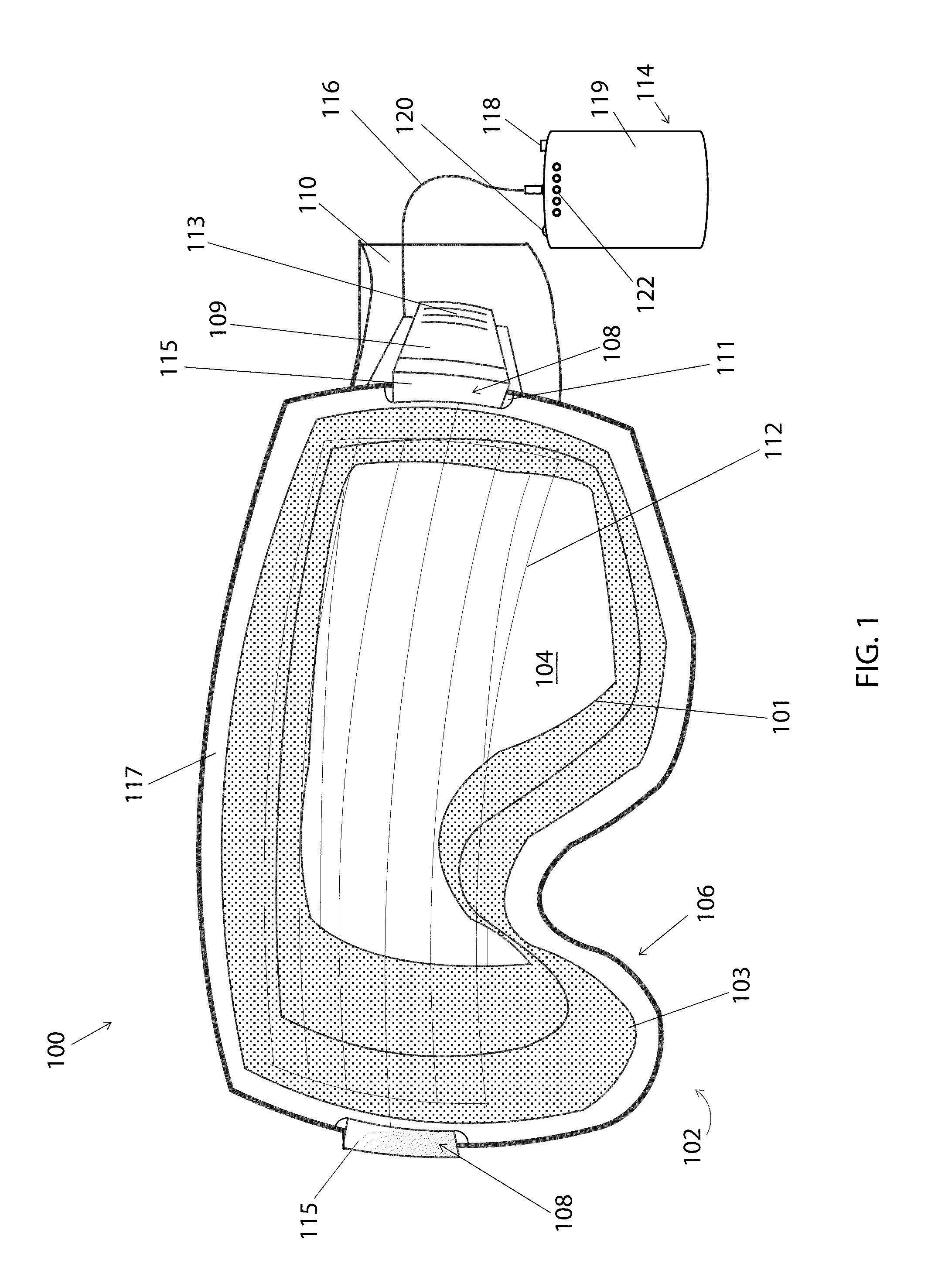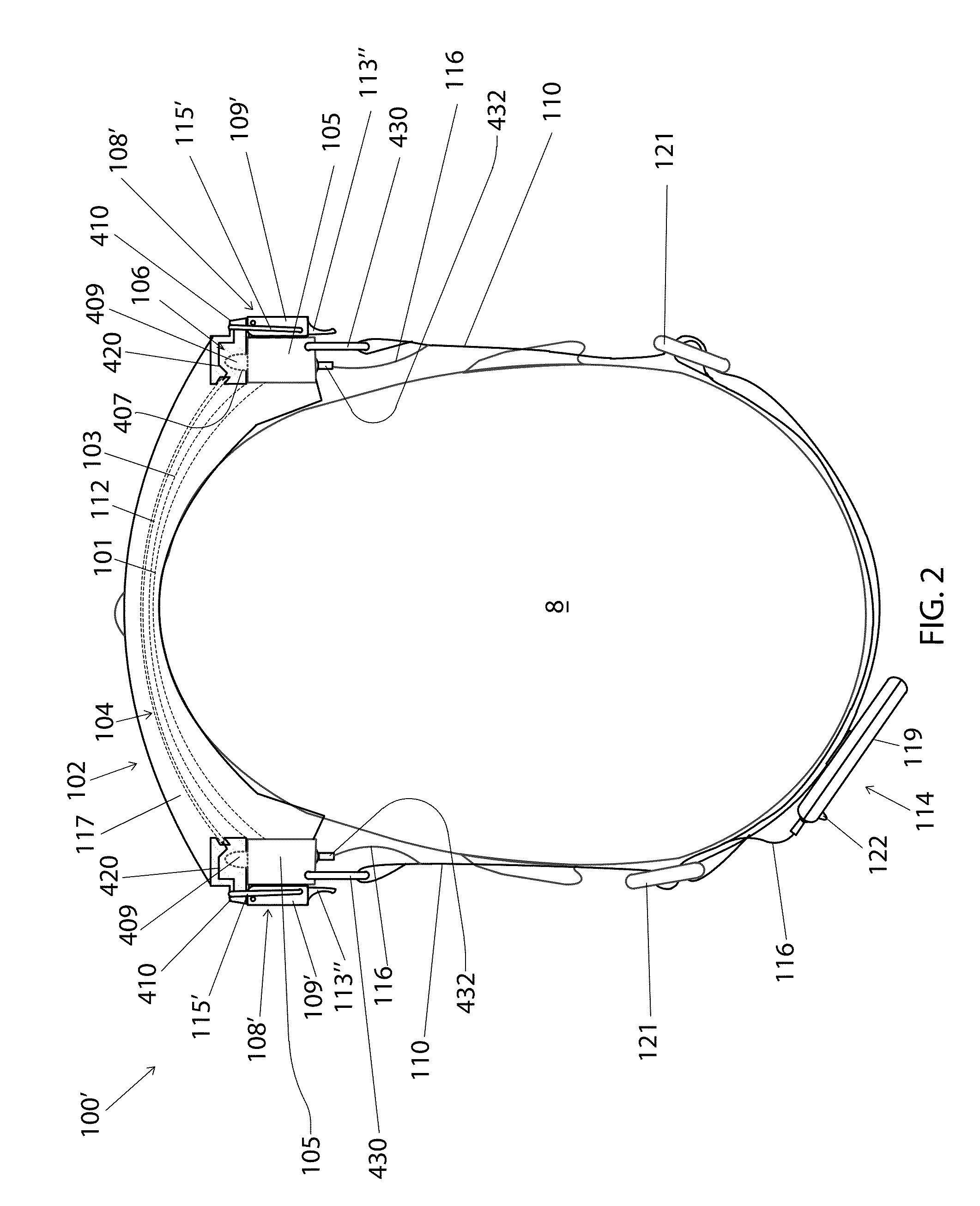Earlier conventional goggles have not provided for interchangeable lenses.
Not only has this resulted in a much less useful goggle as changing lighting conditions through the day have rendered a current goggle unsuitable for more easily distinguishing variations in
terrain, especially snowy
terrain of mostly a single color often having only slight shadows on the surface thereof to determine the presence of variations, but where the lens of the goggle has become damaged, or broken, such goggles have required replacement of the entire goggle.
This process has been time-consuming and cumbersome, making it difficult for a user to easily interchange lenses, so much so that many have determined to not make an attempt to change the lens in the open, but rather to use a lens that has provided multi-purpose, though not ideal, use for most lighting conditions.
Alternatively, where users have shown the patience necessary to have repeatedly changed lenses, these goggle bodies have lost some resiliency, broken, or cracked, due to repeated stressing of the bodies, and this has led to a lack of effective engagement between the lens and the body.
There are many possible conditions which may lead to
fogging of a goggle, since the
dew point of the inside of the lens is affected by varying temperature,
moisture, pressure and ventilation conditions.
One common example of
fogging has occurred when a person who has been skiing,
cycling, hiking or engaging in other strenuous activity, stops moving as quickly as before, reducing the amount of air flow over the surfaces of the goggle, such that temperature differentials between the inner surface of the goggle and the now warmed and moist air within the goggle caused by the physical
exertion and the enclosed space of the goggle have caused fogging.
In such a case there has existed a greater imbalance in temperature between the inner surface of the goggle lens and the warm, moist air now trapped within the goggle, causing condensation and resulting fogging of the inner surface of the goggle lens.
Thus, fogging is a very common problem with goggles and this has occurred in various situations involving temperature extremes, and particularly warmer temperatures caused by
perspiration and
respiration entering within the goggle
enclosure and which are warmer relative to colder temperature conditions outside of the goggle body.
Of course this problem has ranged from being annoying to the user, to presenting a very dangerous situation where the user's field of vision has been greatly diminished while the user has been traveling at high speeds among fixed obstacles, such as trees, widely varying
terrain such as bumps, cliffs, or other participants, or the user has otherwise been unable to clearly see an intended target or an enemy combatant.
The problem of fogged goggles has resulted in injury and even death among goggle users.
Despite best efforts to produce a goggle that utilizes passive air-flow means for defogging the lens of the goggle, there are often present conditions which have rendered passive air-flow means of de-fogging ineffective.
Such conditions have overwhelmed the ability of the passive means to overcome the temperature and
humidity differentials presented by
exertion by a user in cold,
icing conditions or accumulation of
snow clogging ventilation means.
Also, sometimes a user's clothing, especially such as scarves or
face masks, have impeded intended
airflow of such goggles, rendering them ineffective.
One problem of such a device is that it does not necessarily overcome
icing,
snow accumulation or other blockage of outer goggle vents, thus rendering such a
system less effective.
 Login to View More
Login to View More  Login to View More
Login to View More 


